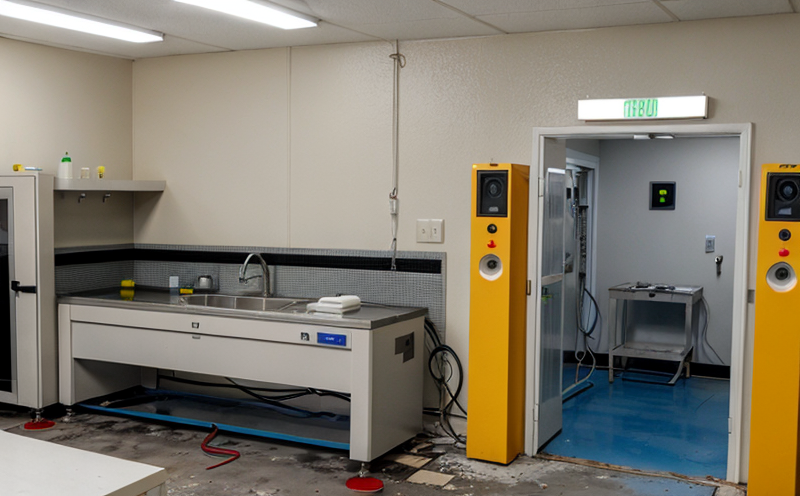ISO 18589-7 Cesium-137 Contamination Testing in Soils
The ISO 18589 series of standards provides a framework for assessing radioactive contamination, including the specific measurement and quantification of cesium-137 (Cs-137) in soil samples. This service is designed to meet stringent regulatory requirements set by various international organizations such as the International Atomic Energy Agency (IAEA), United States Environmental Protection Agency (EPA), and European Union Directives.
ISO 18589-7 specifically focuses on the measurement of Cs-137, which has a half-life of approximately 30 years. This long-lived radionuclide is widely used in nuclear power plants and medical applications, making it critical to monitor its presence in soil environments. The standard outlines detailed procedures for sample preparation, analysis, and reporting that ensure accurate and consistent results.
Our laboratory adheres strictly to the ISO 18589-7 protocol, which involves several key steps:
- Sample Collection: Samples are collected from designated areas using sterile, sealed containers. The location, depth, and quantity of soil samples are recorded meticulously.
- Preparation: Samples undergo thorough washing with deionized water to remove surface contamination and ensure a representative core sample is analyzed.
- Measurement: Using gamma spectrometry techniques, the activity concentration of Cs-137 is determined. This involves placing the prepared soil samples in the detector for a specified period.
- Data Analysis: The raw data are processed to calculate the specific activity of Cs-137. Compliance with regulatory limits is assessed based on these calculations.
- Reporting: Results are presented in a comprehensive report that includes all measurements, calculated values, and compliance statements. Supporting documentation such as chain-of-custody forms and site maps are also provided.
The significance of this testing cannot be overstated, especially given the potential health risks associated with Cs-137 exposure. Regulatory bodies worldwide have established maximum permissible levels (MPLs) for Cs-137 in soil to protect public health and the environment. Our expertise lies in ensuring that these standards are met consistently across all projects.
The accuracy of our testing is further enhanced by our state-of-the-art equipment, including high-purity germanium detectors calibrated against known reference materials. This ensures that even trace levels of Cs-137 can be detected and quantified with precision.
In conclusion, ISO 18589-7 Cesium-137 contamination testing in soils is a critical service for any organization dealing with nuclear or radioactive waste management, environmental remediation projects, or compliance audits. Our commitment to excellence ensures that you receive reliable, accurate, and compliant results every time.
Scope and Methodology
The scope of the ISO 18589-7 standard covers the measurement of Cs-137 in soil samples using gamma spectrometry. This method is chosen for its precision and ability to detect even low levels of contamination. The methodology includes detailed steps for sample preparation, analysis, and reporting.
Sample Preparation: Samples are collected from various depths within a specified area. After collection, the soil is washed with deionized water to remove any surface contaminants. This step ensures that only the core material of interest is analyzed.
Analytical Procedure: The prepared soil samples are placed in the gamma spectrometer for measurement. Gamma rays emitted by Cs-137 are detected, and their energies are used to calculate the specific activity concentration.
Data Analysis: Calculations based on the detected gamma ray intensities yield the specific activity of Cs-137 in the sample. Compliance with regulatory limits is assessed using these values.
The methodology also includes quality control measures such as blank checks, replicate analyses, and reference material comparisons to ensure reliability.
Eurolab Advantages
Our laboratory offers several advantages when it comes to ISO 18589-7 Cesium-137 contamination testing in soils:
- Expertise and Experience: With years of experience, our team is well-versed in the nuances of this testing method.
- Advanced Equipment: Equipped with state-of-the-art gamma spectrometers calibrated against international standards, we ensure accurate results.
- Comprehensive Reporting: Our reports include all necessary data along with compliance assessments and recommendations for remediation if required.
- Global Recognition: Our certifications and accreditations align us with the highest industry standards.
- Speedy Turnaround Times: We pride ourselves on delivering results within a short timeframe without compromising quality.
- Custom Solutions: Tailored services to meet specific client needs, ensuring that each project receives personalized attention.
- Training and Support: Our team is available for training sessions and support throughout the testing process.
In summary, Eurolab’s expertise in ISO 18589-7 contamination testing ensures that you receive reliable, accurate results that meet or exceed regulatory requirements.
International Acceptance and Recognition
- IAEA Recommendations: The International Atomic Energy Agency recommends the use of ISO 18589-7 for Cs-137 measurements in soil samples.
- EPA Compliance: United States Environmental Protection Agency guidelines recognize this standard as a reliable method for soil contamination testing.
- EU Directives: The European Union’s radiation protection directives incorporate ISO 18589-7 as a benchmark for compliance.
- WHO Standards: The World Health Organization uses this protocol in its guidelines for public health and environmental safety.
- OECD Guidelines: The Organisation for Economic Co-operation and Development recommends the use of ISO 18589-7 for international comparisons and reporting.
The widespread acceptance of this standard underscores its importance in ensuring consistent, accurate measurements across different jurisdictions.





